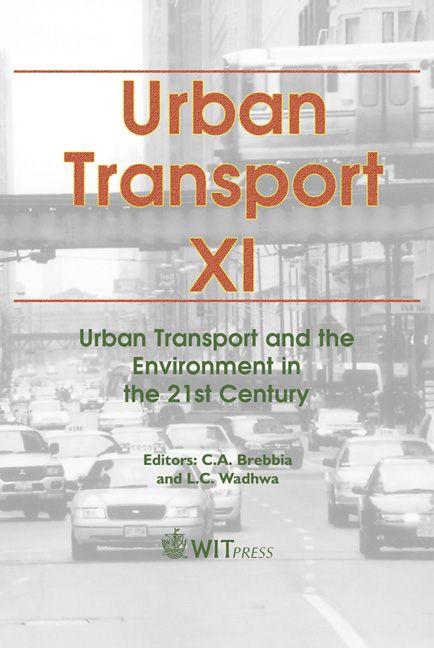Analysis Of The Traffic Management Policy Measures Adopted In The Central Business District Of Palermo
Price
Free (open access)
Transaction
Volume
77
Pages
11
Published
2005
Size
544 kb
Paper DOI
10.2495/UT050011
Copyright
WIT Press
Author(s)
S. Amoroso, M. Migliore, S. Salerno & P. Zito
Abstract
This research analyses the effects on air quality produced by the traffic management measures adopted in the Central Business District of Palermo (i.e. park price, the closure to traffic of Maqueda Road, etc.). Weather data series, pollutant concentrations data series (1997-2003) and the traffic data collected in 2003 were analysed by using different regression statistical models, to appraise the effectiveness of the traffic management policies adopted by City Council, understanding also the cause/effect relationships among the pollutant concentrations (CO, NO2, O3, C6H6 and PM10) and the traffic flows variations over time. Keywords: regression models, air pollution, traffic management measures, air quality 1 Introduction The urban road transport has become the major source of environmental degradation in urban centres, where most of the people live and work. It produces negative externalities (i.e. pollution, congestion, delay, etc.), which are usually connected with the congestion of the traffic flows and the rise of queues on road network. The environmental damage produced by road traffic concerns the pollutant emissions, the noise and also the intrusive occupancy of urban spaces by parking vehicles. All those people, which live, work and for various reasons move in Central Business District of our city centres, are exposed to high pollutant concentration levels near to the road side. In the major of the cases, the regulation tools, introduced by local authorities, are focused to limit air pollution
Keywords
regression models, air pollution, traffic management measures, air quality





